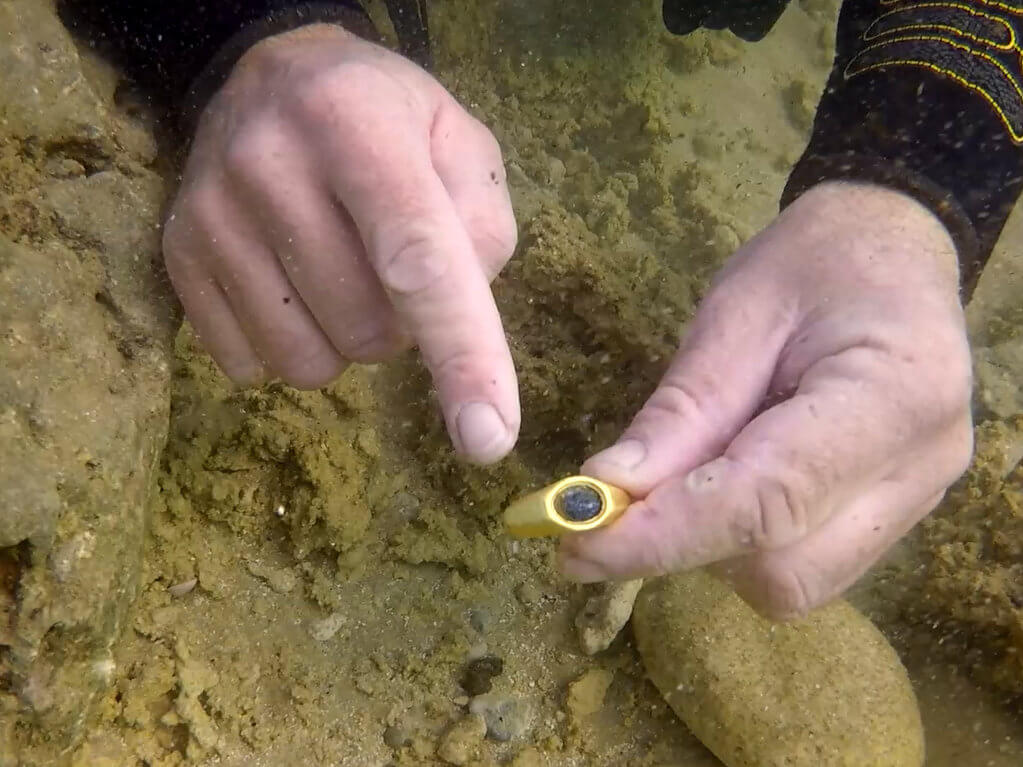
Houseplants spark joy. They add a splash of life and color to any indoor space, and if properly chosen and cared for, they can thrive just about anywhere. Anyone who’s ever started an indoor garden knows that tending to houseplants can quickly become a way of life, if not an addiction. Caring for living things is meditative and therapeutic, and the design aspect they bring to your living space drives you to keep growing your plant collection.
Eventually, you’ll probably want to go full mad scientist and make your own plant babies. Propagating plants is not only cost-effective, it’s also a lot of fun—and will help you steps up your indoor gardening game significantly. While it might seem intimidating at first, growing new plants from cuttings, buds, or roots is a lot easier than you think, especially if you choose the right plants to work with. Here are 15 of the easiest houseplants to propagate.
Pothos

Pothos plants are trailers, meaning they slowly send vines downward, producing a beautiful dangling effect. They are also among the easiest plants to propagate—it’s so easy, you can do it accidentally. Pinch off a leaf and node from an existing plant, put it in water or soil until it produces roots, and you’re set. If you’ve ever imagined a room with gently swaying vines all around the edges, this is your ideal choice.
Snake plant

Houseplant enthusiasts love snake plants because you can literally forget they exist for long periods of time and find them doing just fine. If you dream of a house filled with plants you can ignore for days at a time without negative consequence, cut off a leaf of this hardy plant and root it in water or soil. You can also divide the plant at the root with a knife and then repot.
Spider plant

Spider plants are a bristly, spiky joy. They’re pretty easy to care for—just stick them in a sunny window and don’t overwater, and you’re golden. They also make propagating easy, because eventually they will develop tiny flowers called “spiderettes”—the plant is practically begging you to adopt its children and make them grow. Cut the spiderettes off and root them in water or soil—but soil is best, because spider plants propagated in water sometimes have trouble making the transition to a pot.
ZZ plant

The ZZ plant gets its slick moniker from its scientific name (zamioculcas zamiifolia), but it’s a pretty sleepy plant when it comes to care and feeding. Having evolved in the harsh conditions of eastern Africa, this plant tolerates low light and drought, which means you can stick it in a corner and forget about it and it will thrive. Divide at the root to propagate—just remove it from its pot and separate the tuber-like roots, then repot. You can also place leaves or stalks in water and they will root just fine—but this method can take up to a year.
Chinese money plant

The Chinese money plant is another houseplant that makes it easy on you—it will offer up tiny “pups” that grow directly from the main stem. When you spot one, let it grow for a bit until it’s nice and robust, then remove the new stem and place in water until fresh roots emerge. Once you see that, you can shift the new plant to soil, where it will thrive.
String of pearls

The string of pearls is a succulent that produces long vines covered in tiny bulbs, making it a beautiful and architectural plant to place up high. All it needs is a little sunlight and water and it will soon fill your space with beauty. To propagate, take a cutting of the stem and place it in moist soil. Keep the soil damp and the cutting will sprout roots in a week or less. You can also place the cutting in water if you want to observe the roots forming.
Arrowhead plant

The arrowhead plant is a grower—a vine that will envelop your whole house if you don’t prune it regularly. That eagerness to grow extends to propagation—in fact, since you have to prune them so much anyway, taking a few stem cuttings as you do so will result in plenty of chances to propagate. Just make sure you include a few nodes (segments of the stem with buds on them) and place them in water or soil. After 2–3 weeks you’ll start to see signs of root development, and soon you’ll have a whole new plant trying to take over your house.
The wandering dude

This brightly-colored plant is almost unkillable, which is why it’s a popular choice for “brown thumb” gardeners seeking to brighten up their homes. In fact, even a dying or sick wandering dude can be salvaged by taking a leaf node cutting and rooting it in water or soil. If planting in soil, poke a shallow hole and place the cutting into it, patting the soil firmly around it, then seal the container with plastic to keep the moisture locked in. About a month later you’ll have freshly rooted plants; remove the plastic and water as usual.
Aloe vera

Everyone loves the aloe vera plant for its soothing, moisturizing properties. As a succulent, it’s very easy to propagate. The plant will offer up “pups,” or tiny offshoots, around the base of the plant, that you can snip off once leaves unfurl. Then let it dry (or “scab”) for a few days and place into a fresh pot of soil (use a good succulent mix soil for best results).
Succulents

Just about any succulent will prove to be the easiest propagation experience you’ll ever have. In some cases you can literally drop any portion of a plant into a pot of soil and it will start to root, but for best results just snip off a leaf with a small bit of the stem still attached and place it under the surface of moist soil (using a succulent-specific soil mix is a great idea). Keep the dirt moist but not soaked, and soon a fresh new succulent will emerge.
Swiss cheese plant

Not only does the Swiss cheese plant not require much attention, it lives up to its scientific name (Monstera deliciosa) by growing to truly monstrous size if allowed to—often in just a few months. If the scale of your houseplant doesn’t dissuade you, you can propagate this plant by taking a stem cutting with a node or two, removing the leaves, and then root in water or soil.
African violets

Want more color and more flowers in your home? African violets are not only easy to grow in a pot, they’re also dead simple to propagate. You can take a single leaf cutting and an entire plant will eventually emerge from it. Just cut the leaf at a 45-degree angle and place it in moist soil. Keep it moist—using a plastic container to create a tiny hothouse can help tremendously—and in a few weeks new sprouts will emerge. Wait a bit and then you can repot and place your new plant wherever you need a burst of color.
Mother of thousands

This is another houseplant that does the work for you—every mother of thousands plant sprouts dozens of baby plants along the edges of their leaves, which will eventually drop off. Most of these pups won’t root in the same container as their “mother,” but if you place them in their own soil, they will thrive and quickly root almost without any work on your part aside from typical watering.
Coleus

A colorful and hardy plant, coleus leaves offer a wild range of colors that can brighten any room. They’re also ridiculously easy to propagate. Take a cutting (about 6 inches is a good length) that snips between two leaf nodes, remove the lower leaves (leaving a few at the top) and root in water. Make sure the water level covers a few of the nodes, then place in direct sunlight. About two weeks later you’ll see roots.
Begonias

There are a lot of varieties of begonias, but all are pretty easy to propagate using basically any technique. The easiest is to take some simple cuttings from just below a node from a mature plant and put them in water. Place somewhere that offers a lot of sun, but not constant sun. (Too much sun can cause your cutting to rot.) You can also root these in soil if you prefer—begonias aren’t terribly fussy.
Note: This article have been indexed to our site. We do not claim legitimacy, ownership or copyright of any of the content above. To see the article at original source Click Here







